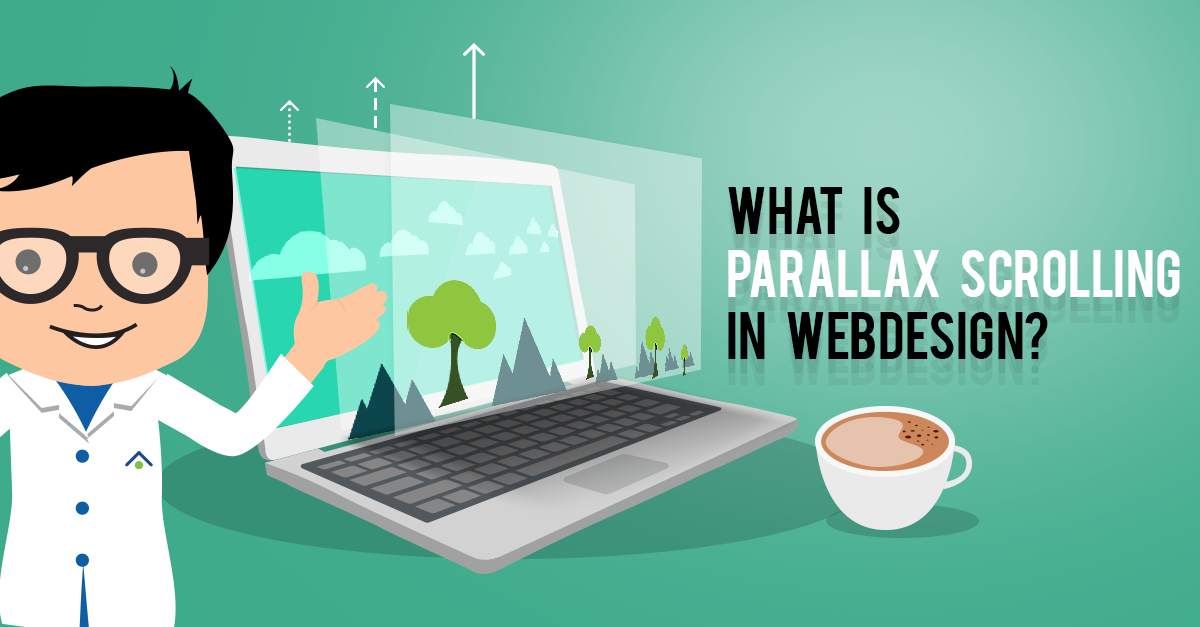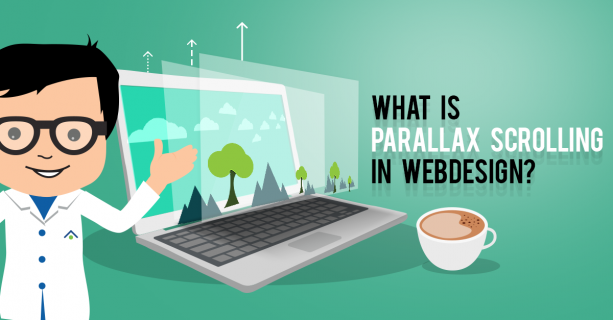If you are involved in web design or the Internet, in general, I’m sure you've heard of the term "parallax". It seems that parallax is a popular trend in the web design right now, similar to how responsive design was a few years ago.
Origins of the Word Parallax
Parallax comes from the Greek word “parallaxis," which means to alternative or to vary. The term parallax can be described as “the observed shift in position of an object”.
Today, the term parallax is usually referred to as a scrolling technique. Parallax scrolling is a web design technique where a background image moves slower than the foreground image, giving the illusion of a 2D effect. Until recently, the Parallax effect has been used primarily in arcade video games and computer games.

There are 4 different methods of parallax scrolling:
- The Layer Method
- The Sprite Method
- The Repeating Pattern Method
- The Raster Method
You can find out more about them here.
Parallax scrolling in website design has been growing in popularity because it brings a new level of online viewing to the user. Just as Flash brought animation to websites 10 years ago, parallax scrolling brings a degree of animation to a website and can still be crawled by search engines (unlike a Flash swf file).
Also on TechWyse
10 Extremely Creative And Cool Website Layout Designs
A Historical Look at the Evolution of Web Design
Why Parallax Design?
The main benefits to Parallax Design are storytelling, engagement, and fun!
Parallax is the ideal setting to tell your story in an interactive way. Scrolling down a page, your visitor can become captivated in the beautifully illustrated images, text, and video.
This will draw viewers in and keep them engaged. The longer a viewer is engaged on your site, the better the indicators are to Google for better organic SEO rankings.
In addition, parallax allows you to take your website visitors on a journey through your company, products, services, and other important features that is showcased on your website. It also allows your viewer to feel in charge of the experience.
This will leave them with a positive feeling and gives them the impression that they are immersed in the experience.
Potential Issues with Parallax Design
Google’s algorithm change regarding the mobile friendliness of a website has dramatically increased the need for responsive design. This causes issues with parallax effects as parallax does not yet render on mobile devices.
Yes, the website is resized (part of responsive design), but the animated parallax effects are lost. This will most likely change in the near future, as mobile browsing continues to improve.
Another issue is that current design trends are leaning towards infinite scroll and a continuous webpage. From a mobile aesthetics perspective, this is good. However, from a tablet, desktop, and SEO perspective, this is not so good.
A long, continuous page uses only one set of meta information for a search engine to crawl. This will not make it difficult for your website to rank well because a single page will take longer to load, have limited above-the-fold space, lack of meta title, and meta descriptions. However, there are ways around this if you have the know-how and understand what to do.
Here is an example of a recent parallax site developed by my company, TechWyse Internet Marketing.
You Need a Skilled Internet Partner
Web design and Internet marketing has, and will continue to be more complex. Not only do you need an experienced web designer that is familiar with conversion enhancement, but you also need an experienced marketing company so your design and marketing strategies can work together in harmony.
Let me know in the comments below if you're using parallax scrolling for your web design. If so, what are some of the limits you're facing? Why did you choose to use a parallax design?







on
Great post Eddy, the new trends in webpage design are so exciting, parallax has some great potential, but the mobile technology has to catch up to gather more clicks and visitors to enjoy these new design ideas, but like you mentioned is only a matter of time. Cheers!
on
Hi Eddy, nice post. I indeed agree with you about some potential drawbacks using parallax design for mobile. I still think that it wont go anywhere anytime soon as long as PCs are still common.
My opinion, Parallax websites are better to be a complementary to another website, if its about marketing. Like for example a microsite, or a page dedicated to promoting a product or portfolio. As a main website, like you said, it wont be as effective as standard sites because of its size and the amount of data search engines have to process. Therefore, they are kinda heavier to load. As the internet is getting faster in terms of speed, people are becoming less patient, and a slow loading website no matter how good they are, wont appeal well to those people.
Dont you think so, Eddy?